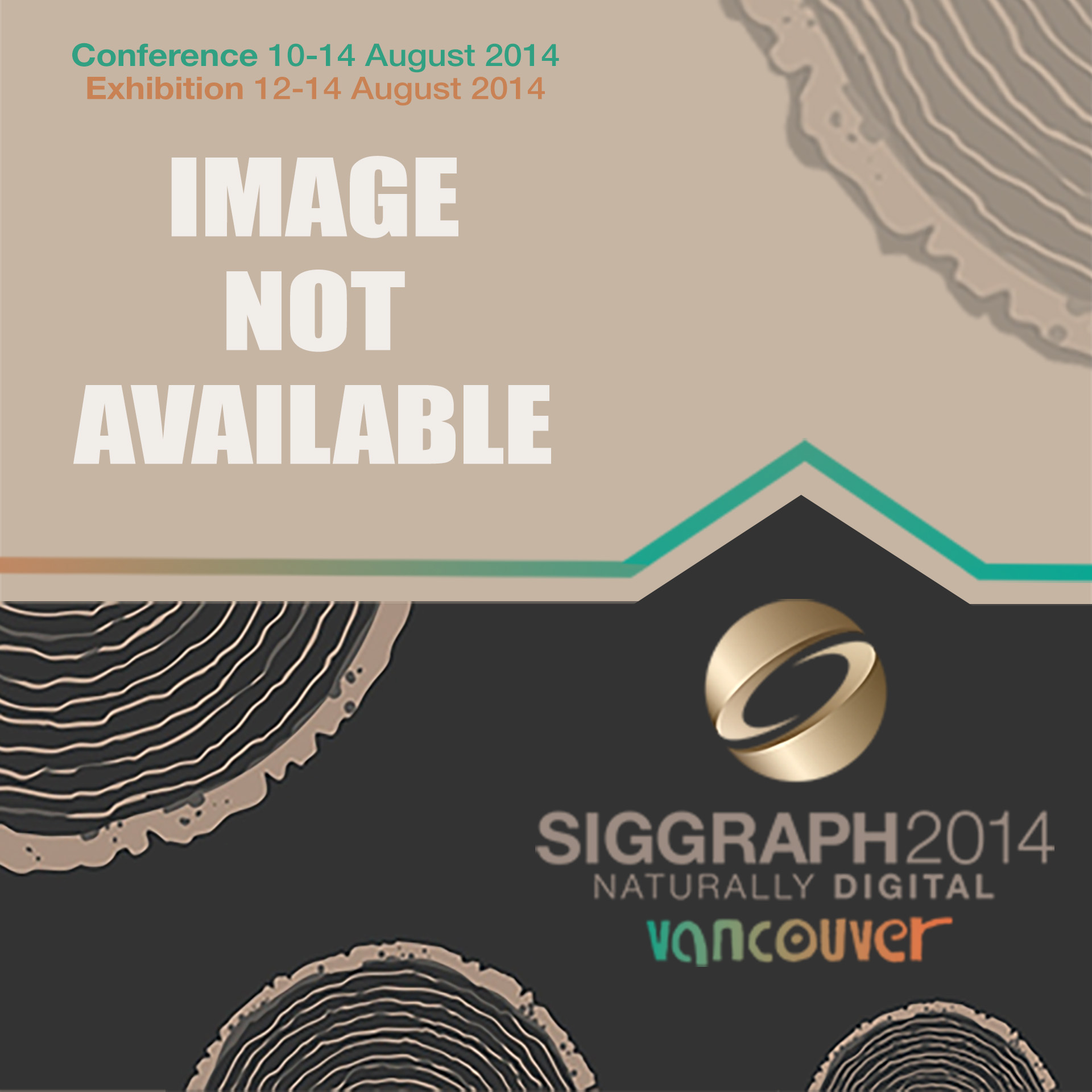“ℓ1-Based Construction of Polycube Maps from Complex Shapes” by Huang, Jiang, Shi, Tong, Bao, et al. …
Conference:
Type(s):
Title:
- ℓ1-Based Construction of Polycube Maps from Complex Shapes
Session/Category Title: Surfaces, Shapes, and Maps
Presenter(s)/Author(s):
Moderator(s):
Abstract:
Polycube maps of triangle meshes have proved useful in a wide range of applications, including texture mapping and hexahedral mesh generation. However, constructing either fully automatically or with limited user control a low-distortion polycube from a detailed surface remains challenging in practice. We propose a variational method for deforming an input triangle mesh into a polycube shape through minimization of the ℓ1-norm of the mesh normals, regularized via an as-rigid-as-possible volumetric distortion energy. Unlike previous work, our approach makes no assumption on the orientation, or on the presence of features in the input model. User-guided control over the resulting polycube map is also offered to increase design flexibility. We demonstrate the robustness, efficiency, and controllability of our method on a variety of examples, and explore applications in hexahedral remeshing and quadrangulation.
References:
- M. Alexa, D. Cohen-Or, and D. Levin. 2000. As-rigid-as-possible shape interpolation. In Proceedings of the Annual ACM SIGGRAPH Conference on Computer Graphics and Interactive Techniques. 157–164.
- K. D. Andersen. 1996. An efficient newton barrier method for minimizing a sum of euclidean norms. SIAM J. Optim. 6, 1, 74–95.
- N. Aspert, D. Santa-Cruz, and T. Ebrahimi. 2002. Mesh: Measuring errors between surfaces using the hausdorff distance. In Proceedings of the IEEE International Conference and Multimedia Expo (ICME’02). Vol. 1. 705–708.
- H. Avron, A. Sharf, C. Greif, and D. Cohen-Or. 2010. ℓ1-sparse reconstruction of sharp point set surfaces. ACM Trans. Graph. 29, 5, 135.
- M. Benzi, G. Golub, and J. Liesen. 2005. Numerical solution of saddle point problems. Acta Numerica 14, 1, 1–137.
- M. Botsch, M. Pauly, M. Gross, and I. Kobbelt. 2006. Primo: Coupled prisms for intuitive surface modeling. In Proceedings of the Symposium on Geometry Processing. Vol. 256. 11–20.
- M. Campen, D. Bommes, and I. Kobbelt. 2012. Dual loops meshing: Quality quad layouts on manifolds. ACM Trans. Graph. 31, 4, 110.
- Y. Chen, T. A. Davis, W. W. Hager, and S. Rajamanickam. 2008. Algorithm 887: Cholmod, supernodal sqare cholesky factorization and update/downdate. ACM Trans. Math. Softw. 35, 3, 22:1–22:14.
- R. El-Attar, M. Vidyasagar, and S. Dutta. 1979. An algorithm for ℓ1-norm minimization with application to nonlinear ℓ1-approximation. SIAM J. Numer. Anal. 16, 1, 70–86.
- I. Garcia, J. Xia, Y. He, S.-Q. Xin, and G. Patow. 2013. Interactive applications for sketch-based editable polycube map. IEEE Trans. Vis. Comput. Graph. 19, 7, 1158–1171.
- N. I. M. Gould, D. Orban, and P. L. Toint. 2003. An interior-point ℓ1-penalty method for nonlinear optimization. Tech. rep. RAL-TR-2003-022, Rutherford Appleton Laboratory.
- J. Gregson, A. Sheffer, and E. Zhang. 2011. All-hex mesh generation via volumetric polycube deformation. Comput. Graph. Forum 30, 5, 1407–1416.
- Y. He, H. Wang, C.-W. Fu, and H. Qin. 2009. A divide-and-conquer approach for automatic polycube map construction. Comput. Graph. 53, 369–380.
- J. Huang, Y. Tong, H. Wei, and H. Bao. 2011. Boundary aligned smooth 3d cross-frame field. ACM Trans. Graph. 30, 6, 143.
- P. J. Huber. 1981. Robust Statistics. John Wiley & Sons.
- G. Irving, J. Teran, and R. Fedkiw. 2004. Invertible finite elements for robust simulation of large deformation. In Proceedings of the ACM SIGGRAPH/Eurographics Symposium on Computer Animation. 131–140.
- F. Knoppel, K. Crane, U. Pinkall, and P. Schroder. 2013. Globally optimal direction fields. ACM Trans. Graph. 32, 4, 59:1–59:10.
- Y. Li, Y. Liu, W. Xu, W. Wang, and B. Guo. 2012. All-hex meshing using singularity-restricted field. ACM Trans. Graph. 31, 6, 177:1–177:11.
- J. Lin, X. Jin, Z. Fan, and C. C. L. Wang. 2008. Automatic polycube-maps. In Proceedings of the 5th International Conference on Advances in Geometric Modeling and Processing (GMP’08). Springer, 3–16.
- L. Luksan, C. Matonoha, and J. Vlcek. 2007. Trust region interior-point method for large sparse ℓ1 optimization. Optim. Methods Softw. 22, 5, 737–753.
- A. Myles, N. Pietroni, D. Kovacs, and D. Zorin. 2010. Feature-aligned t-meshes. ACM Trans. Graph. 29, 4, 117.
- M. C. Pinar and W. M. Hartmann. 2006. Huber approximation for the non-linear ℓ1 problem. Euro. J. Oper. Res. 169, 3, 1096–1107.
- SANDIA NATIONAL LABORATORY. 2010. Mesh verification with verdict. https://cubit.sandia.gov/public/verdict.html.
- K. Schittkowski. 2008. NLPL1: A fortran implementation of an sqp algorithm for minimizing sums of absolute function values, user’s guide. www.ai7.uni-bayreuth.de/NLPL1.pdf.
- J. Schoberl. 1997. Netgen: An advancing front 2d/3d-mesh generator based on abstract rules. Comput. Vis. Sci. 1, 1, 41–52.
- M. Tarini, K. Hormann, P. Cignoni, and C. Montani. 2004. Polycube-maps. ACM Trans. Graph. 23, 3, 853–860.
- M. Tarini, E. Puppo, D. Panozzo, N. Pietroni, and P. Cignoni. 2011. Simple quad domains for field aligned mesh parameterization. ACM Trans. Graph. 30, 6, 142.
- H. Wang, M. Jin, Y. He, X. Gu, and H. Qin. 2008. User-controllable polycube map for manifold spline construction. In Proceedings of the ACM Symposium on Solid and Physical Modeling. 397–404.
- C. Yao and T. Lee. 2008. Adaptive geometry image. IEEE Trans. Vis. Comput. Graph. 14, 4, 948–960.




